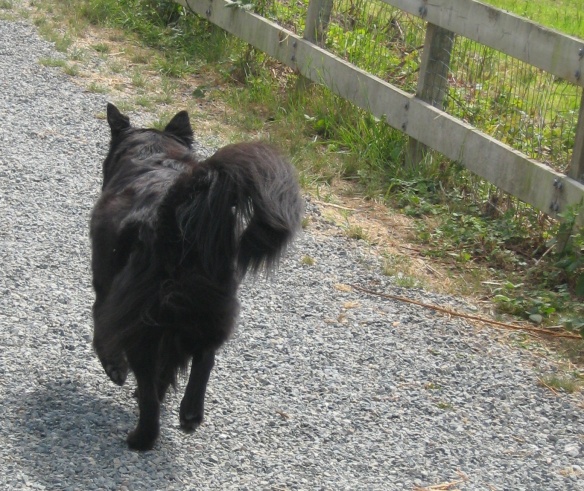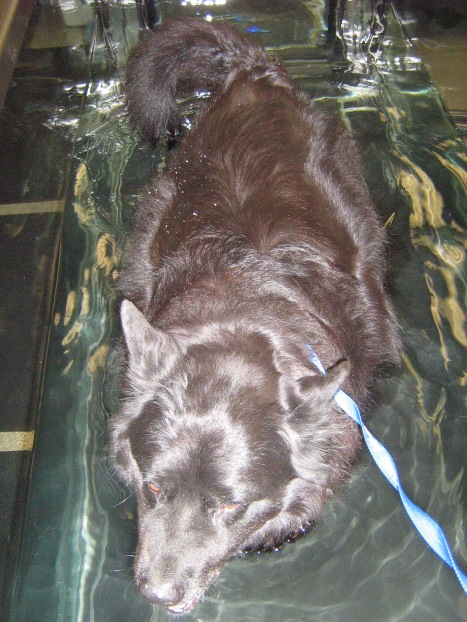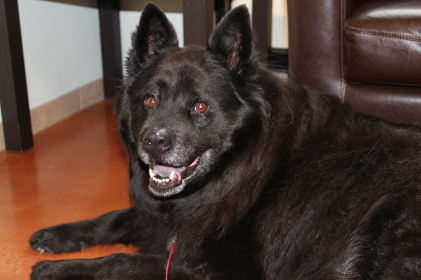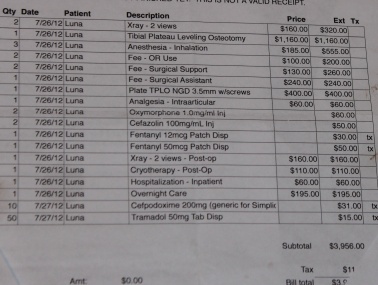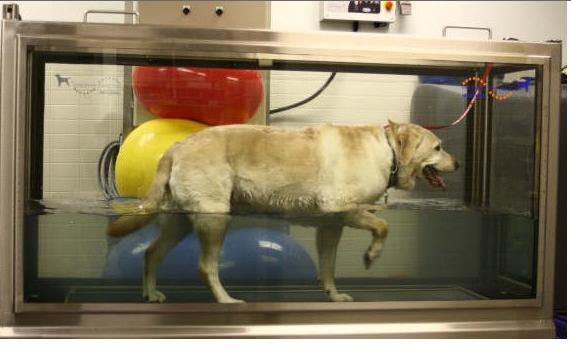“And, she’s a happy dog!” That’s what the rehab vet said recently when I took Luna in for an Adequan injection, which she now gets once a month to discourage inflammation in her joints .
About 10 months have passed since Luna’s TPLO surgery to repair her ruptured ligament in her right rear knee. She had a rocky recovery due to being overweight and to having a torn ligament in her other knee, as well. But she and I soldiered through, doing the work, staying the course, adhering to the recovery plan. And, it was worth it: She’s looking good and doing well now. A happy dog!
I remember a year ago she was hobbling on three legs. I was fearful, worried: “What should I do? I don’t want to cause her greater suffering. But, I can’t bear the thought of her declining slowly, losing more function, becoming depressed. What if the surgery is a bad move? But, what if it works really well?” I went for it.
Immediately after the surgery, I used a full body harness to help Luna move about because her other rear knee had failed, as well, most likely because its cruciate ligament was partially torn, too. During the day when I was at work, she lay in the shade of a Japanese maple in my backyard on a cool patch of bare earth. At night I slept near her to make sure I could respond to her needs quickly. (The latter was hardly necessary, but it made us both feel better.)
Within a couple of weeks of her surgery, Luna began a series of 10 sessions of water rehab, twice a week for five weeks. Rehab involved her standing in chest-high water and walking on an underwater treadmill for about 20 or 30minutes. These sessions seemed to seal the positive trajectory of Luna’s recovery: Buoyed by the water, she re-acquainted herself with walking on four legs. That seemed to boost her mood and confidence.
As directed by the vet, I put Luna on a strict diet immediately after her surgery. That worked like a charm: She has weighed-in at a lean 62 pounds for the past few months, down from a high of 85 pounds. Her fur is as soft as velvet and she’s got a twinkle in her eye.
Because Luna’s left, unrepaired knee remains fairly compromised, she does not cover a lot of ground on our walks. She enjoys stopping for rests along the way, during which I hunker down beside her and give her a “rub down” to her never-ending delight. Her repaired leg seems to be doing great!
So, did I make the right choice? Yes. Absolutely. Would I recommend the procedure for others: Definitely—especially considering that the vast majority of dogs bounce back quickly and the biggest challenge facing their people is how to keep them quiet for six weeks.
Onward! All four paws on the ground!

